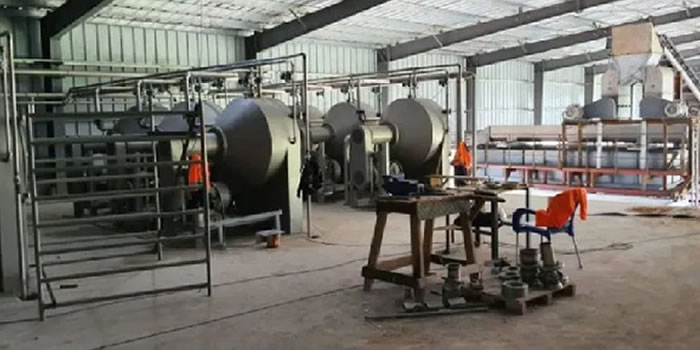

Institutional and Administrative Arrangements
The institutional and administrative arrangements of the Asante Akim Central Municipal Assembly is organised in accordance with the Local Government System Act, 1993 (ACT 462). The Asante Akim Central Municipal Assembly was established by Legislative Instrument (L.I.) 2056 of 1st July 2012. The Municipal Assembly is the political administrative authority with the mission “to ensure improvement on the quality of p of honesty, transparency and accountability”.
The Assembly is made up of thirty-six (36) Assembly Members of whom twenty-five (25) or two-thirds are elected by universal adult suffrage and eleven (11) are government appointees with the Member of Parliament and the Municipal Chief Executive as Ex-officio members. The Municipal Assembly is presided over by the Presiding Member elected from among their rank.
By law, the Assembly meets at least 3 times a year upon a call to meeting by the Honourable Presiding Member. The Assembly has 7 Sub committees. The table below indicates the composition of the various sub committees of the Assembly.
The Assembly has Public Relations and Complaints committee which is chaired by the honourable Presiding Member. This committee sits to resolve problems within and among Assembly members and public officials.
Functions of the Asante Akim Central Municipal Assembly
The municipal assembly derives its functions from the Local Government Act and the Legislative Instrument No. 1418 of 1988. Specifically the functions are indicated as follows:
To see to the overall development of the Municipality by ensuring the preparation and submission of the following through the Regional Co-ordinating Council:
· Development Plans of the Municipality to the National Development Planning Commission for approval
· The budget of the Municipality of the Ministry of Finance for approval
· Formulate and execute plans, programmes and strategies for the effective mobilisation of the resources, necessary
for the overall development of the Municipality;
· Promote and support productive activity and social development in the Municipality;
· Initiate programmes for the development of basic infrastructure and provide works and services in the Municipality;
· Responsible for the development, improvement and management of human settlement and environment in the Municipality.
The Municipal Administration
At the Municipal Administration level, L. I. 1961 mandates are eleven (11) decentralized departments that work hand in hand to provide technical inputs to the general Assembly decisions. The following Decentralized Departments as prescribed by the L. I 1961 can be found in the District
1. Central Administration
2. Education, Youth & Sports
3. Social Welfare and Community Development
4. Works (Public Works, Feeder Roads)
5. Physical Planning (Town & Country Planning, Parks & Garden)
6. Finance
7. Natural Resource Conservation (Forestry, Games & Wildlife)
8. Trade & Industry (NBSSI & Co-operatives)
9. Disaster Prevention (NADMO, Fire Service)
10. Health
11. Agriculture (Animal Health & Production, Agricultural Extension Services)
These Departments need to be strengthened with staff and the needed logistics for a concentrated development of the entire district. Natural Resource Conservation, Forestry, Game and Wildlife Division is not in the District.
The following Agencies can also be found in the Municipality
· Information Service Department
· Ghana Revenue Authority
· Social Security And National Insurance Trust
· Internal Audit Department
· Ghana Water Company Limited
· Electricity Company Of Ghana
· Ghana Immigration Service
· National Commission On Civic Education
· Ghana Ambulance Service
· Ghana Fire Service
· Valuation Board
· Statistical Service
· National Health Insurance Authority
· National Service Scheme
· Rent Control Department
Sub-Municipal Structures
The Municipal Assembly has three (3) Zonal Councils, Twenty–five unit Committees within Twenty-Five Electoral Areas and one constituency.
Traditional Authorities
Chieftaincy (the pre-colonial and traditional institution of governance with judicial, legislative, and executive powers) remains an indispensable aspect of the culture of the people in the municipality. This is because the chiefs still remain as custodians of culture. They help in conflict resolution thereby helping keep peace in the municipality. The Chiefs also remain as development partners to the Municipal Assembly.
There are four (4) sub-paramount chiefs, locally referred to as Abrempong, in the municipality. They are the chiefs of Obenimasi, Dwease, Kyekyebiase and Petriensa. Petriensa belongs to the Agona clan, Obenimasi is the Oyoko clan, Kyekyebiase is the Bretuo clan, while Dwease belongs to the Ekona clan.
Odumasi, Konongo and most of the other communities belong to the Juabeng Tradional Council. The chief of Odumasi, for instance, is the Nifahene (Right Wing Leader) to the Juabeng Traditional Stool.
Some age-old traditions are still held onto by the people in the municipality. The people observe sacred days like Akwasidae and Fofie. Akwasidae, is held every six weeks and on such a day libation is poured and sacrifices are made to the gods and ancestors. The Friday preceding 10 days to the Akwasidae is called the Fofie (meaning a ritual Friday).
In the municipality, Tuesdays are generally observed as taboo days where people are forbidden to undertake any farming activities. Such days are used for communal labour to help in the development of the communities.
Date Created : 11/17/2017 2:34:06 AM










 facebook
facebook
 twitter
twitter
 Youtube
Youtube
 +233 593 831 280
+233 593 831 280 0800 430 430
0800 430 430 GPS: GE-231-4383
GPS: GE-231-4383 info@ghanadistricts.com
info@ghanadistricts.com Box GP1044, Accra, Ghana
Box GP1044, Accra, Ghana